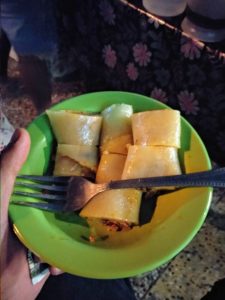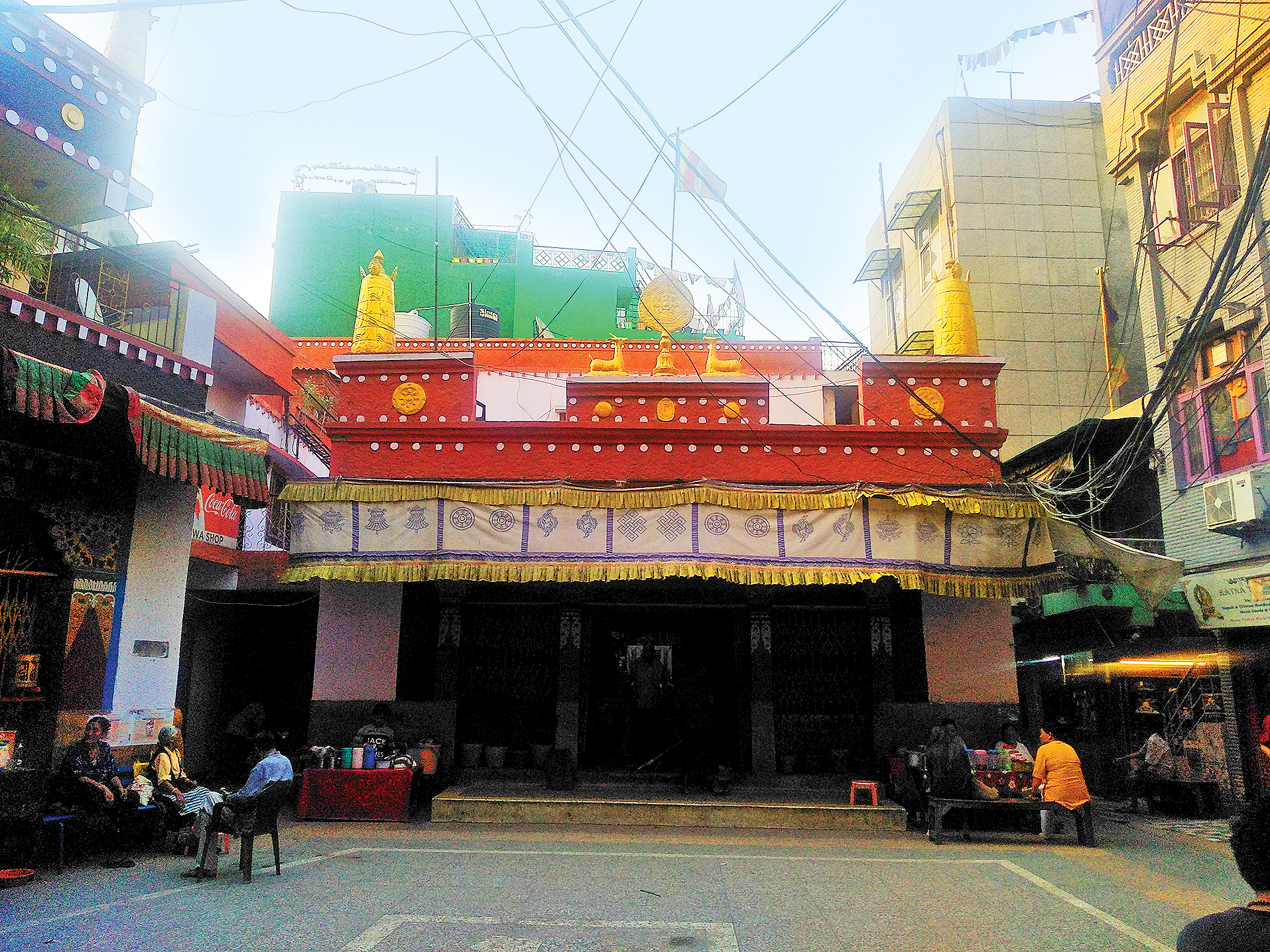From food and clothes to gift items, the Tibetan colony in Majnu ka Tilla offers visitors a peek into the culture of Tibet, as this place seems like a world of its own
About three kilometers away from one of the busiest spots in the city, the Kashmere Gate Metro station, lies a place that poses a stark contrast to what one would normally associate with Delhi. Away from all the commotion and chaos of the Capital, this place lies tucked away – like a world of its own. The place we are talking about is the Tibetan refugee settlement in Majnu Ka Tilla, also referred to as New Aruna Nagar.
Popularly known as MKT, this area is situated near the busy Majnu ka Tilla Gurudwara. There’s heavy traffic on the main road and the footpath is filled with hawkers and lined with several grocery shops. In the midst of this commotion, there is a small gate outside a narrow alley that is a replica of a Tibetan monastery gate. Once you enter this lane, you are now transported to a new world — a world far away from the noise outside.
A walk down this alley leads to a large courtyard that houses their monastery. With soft Tibetan music playing in the background, candles are lit by monks who are wearing the traditional attire of yellow and red robes. Right outside the monastery is a huge prayer wheel, in addition to the several small prayer wheels that surround the monastery. “A walk around the monastery, rotating every prayer will grant all your wishes,” says an elderly lady sitting right outside it.
But the main attraction for foodies is not the monastery, but the lady sitting in front of it with a small bench and a table, selling the famous Tibetan delicacy — laphing. Popularly known as Aunty’s Laphing, 46-year-old Pema has been running the shop for the past 15 years. “Every day I open the shop at around 4 pm and sell around 200-250 laphings a day, depending on the quantity of ingredients that I have,” says Pema. “I usually shut shop around 8 pm, but sometimes the demand is such that all my food gets over within two hours,” she adds.

So, what exactly is laphing? It is nothing but pieces cut out of a roll made with yellow flour and stuffed with chunks of soybean, melted butter, Tibetan sauces and a secret white ingredient that Pema refuses to reveal, calling it her secret ingredient. “I think what makes this so special is the fact that all my ingredients are home-made,” she says with a smile, as she prepares a bowl of laphing that is priced at just Rs 40.
A walk further down the lane will prepare you for more delights to satiate your gastronomical needs. Among the many restaurants housed here, the two that really stand out are Sera Mey and Ama Restaurant, as they serve authentic Tibetan cuisine. A small and cosy joint, situated a little further in the alley, Sera Mey’s speciality is certainly their portomien. Portomien are flat Tibetan noodles, and the uniqueness of it lies in the fact that these noodles are not bought from the market, but are hand-made, right there in their kitchen. “We try to keep our food authentic, and this why a lot of time goes into making it, and guests often complain of late service, but still come here,” says Raju, a waiter at the restaurant, jokingly. The three varieties of portomien — chicken, pork and buff — are priced at just Rs 120 each.
If you think of Tibetan food, the first thing that comes to mind is a pork dish. And there is no better place to have pork than Ama restaurant. The last restaurant in this dimly lit alley is quite hidden from the public eye, and yet it remains jam-packed most of the time. The reason is their delicious tender pork ribs. “The rib of the pork is cut into four pieces and served to the customer in a special Tibetan sauce,” says Rabten, the manager of the restaurant. The specialty, also lies in the fact that the dish is not cooked in oil but the pork fat itself. The dish costs Rs 250
per plate.
In addition to these Tibetan delicacies, one can also try other cuisines like Naga, Nepali and Korean, as there are many restaurants in this alley.
But it is not only food that is a speciality here. The lane is lined with Tibetan gift shops selling goods from Tibet, and also traditional Tibetan clothes. One such shop is Norling Gallery, which houses various indigenous items from Tibet — from their traditional robe attire to Tibetan Masks. But the thing that they specialise in are indigenous incense sticks from Tibet. In addition, there are various roadside shops selling Tibetan junk jewellery and other items like caps and scarves.
Also, you get good shoes — all first copies of big brands — at almost half the price of an Adidas or a Nike shoe. Football fanatics also visit this place to get the jersey of their favourite European clubs. One look at the jerseys and it will be difficult to distinguish between that and the original one. So, while an original jersey costs you around Rs 5,000, you get that here for just Rs 800.
The economy of this place, however, is primarily dependent on the innumerable guest houses and hotels that are stacked side by side in this narrow alley. “A lot of Tibetans visit this area to meet their relatives, who have settled here to earn a living or are studying. Nowadays, many tourists come and stay here, just to get a feel of our culture,” says Phuntsokh, the owner of Lhasa guest house.
But since this area is still marked as a refugee colony, a large shadow of doubt looms over them. With the possibility of the implementation of NRC all over the country, many residents fear that they will have no home. “With what is happening to refugees all over the country, especially the implementation of the NRC scheme in Assam, we live in constant fear of being homeless,” says Tsering, a student of Delhi University who was born and brought up here.
The history of MKT
Numerous reports say that this area came into existence after the 1959 Tibetan uprising, when the Dalai Lama went into exile in Dharamshala and many Tibetans followed him into India. The population in the colony further increased after the 1962 Sino-India war. In 2006, this area came into dispute when the Delhi government ordered its demolition owing to road expansion work. In 2013, the Government of Delhi declared this as one of the 895 “to-be regularised” colonies.





